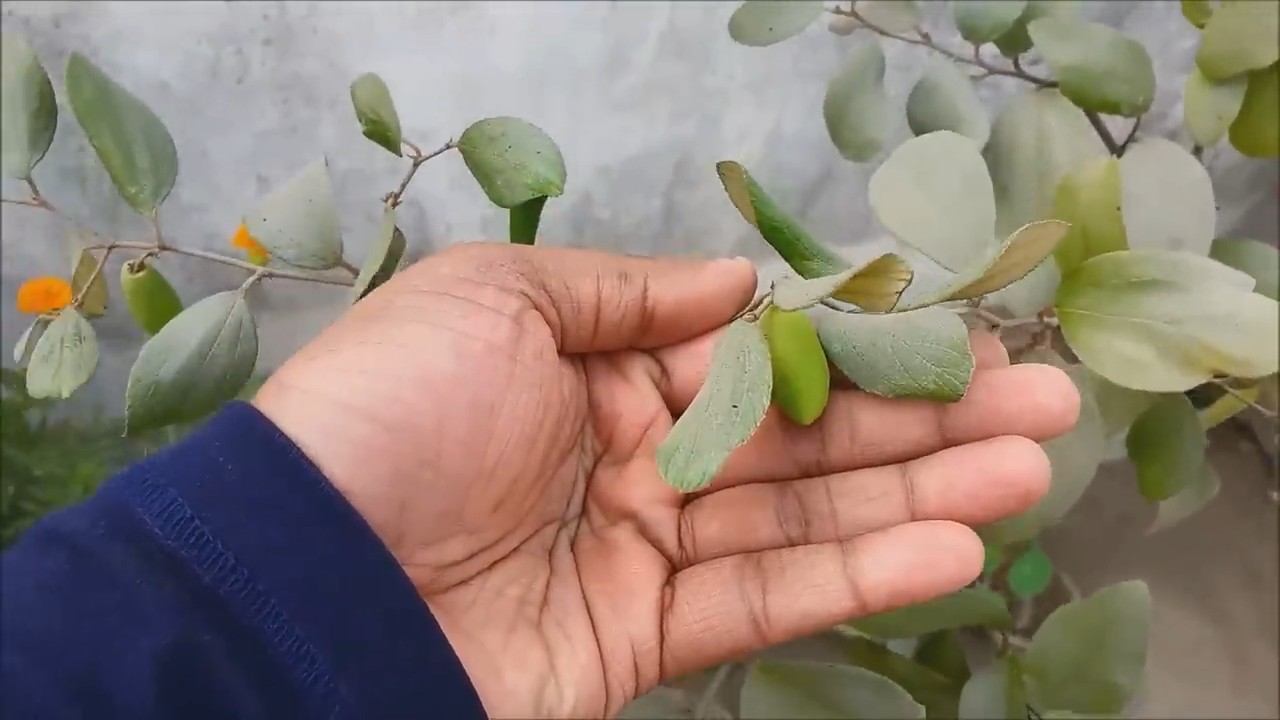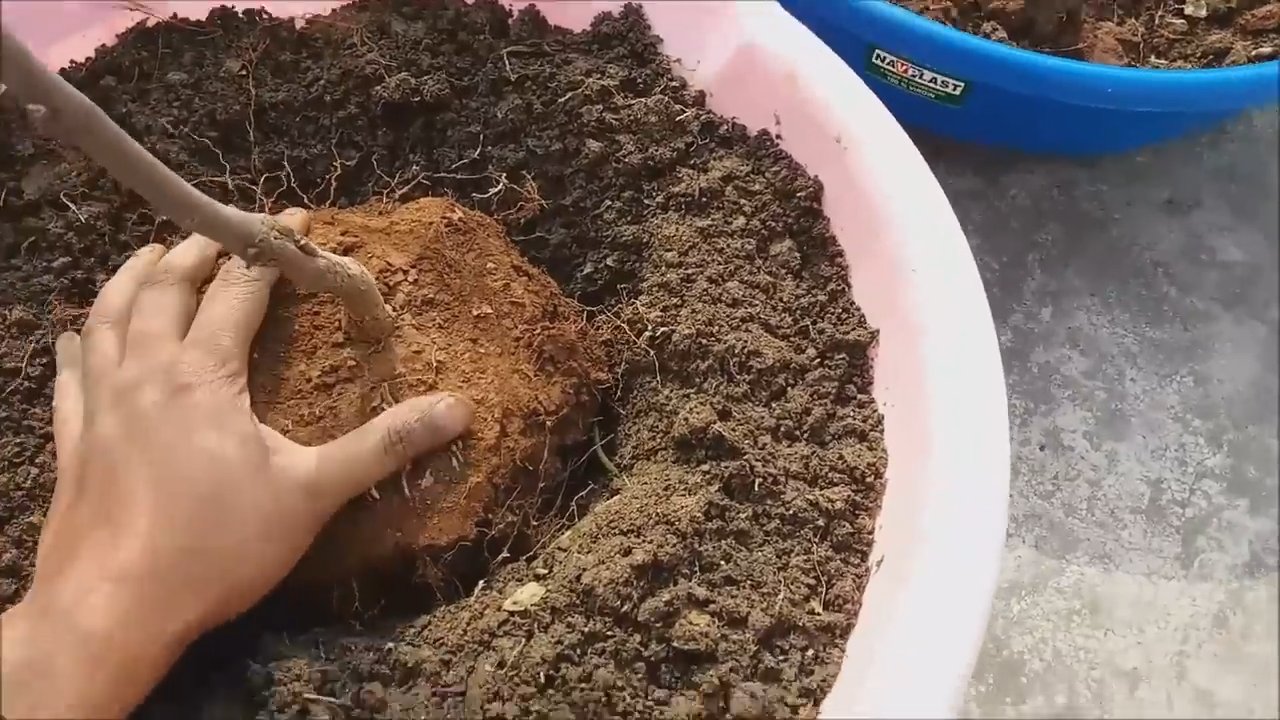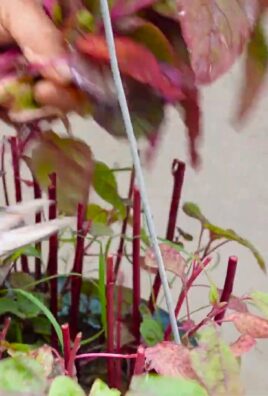Growing Jujube in Containers might sound like an exotic dream, but trust me, it’s totally achievable, even if you’re short on space! Have you ever imagined plucking sweet, date-like fruits right from your balcony or patio? That’s the magic we’re unlocking today with this ultimate DIY guide.
Jujubes, also known as Chinese dates, have a rich history stretching back thousands of years in Asia, where they’re revered for their delicious flavor and medicinal properties. For centuries, they’ve been a symbol of good health and prosperity. While traditionally grown in orchards, modern gardening techniques now allow us to enjoy these amazing fruits even in urban environments.
Why should you bother with growing jujube in containers? Well, for starters, it’s incredibly rewarding! Plus, it’s a fantastic way to add a unique and productive element to your small-space garden. Maybe you don’t have the space for a full-sized tree, or perhaps you want to protect your precious jujube from harsh weather. Whatever your reason, container gardening offers a flexible and manageable solution. I’m going to walk you through everything you need to know, from choosing the right container and soil to pruning and pest control. Get ready to embark on a fun and fruitful gardening adventure!

Jujube im Topf ziehen: Dein DIY-Leitfaden für eine süße Ernte
Hallo liebe Gartenfreunde! Habt ihr schon mal von Jujube gehört? Diese kleinen, dattelähnlichen Früchte sind nicht nur superlecker, sondern auch unglaublich gesund. Und das Beste: Ihr könnt sie auch ganz einfach im Topf auf eurem Balkon oder eurer Terrasse anbauen! Ich zeige euch, wie es geht.
Warum Jujube im Topf?
Jujube-Bäume sind eigentlich recht robust und können auch in kälteren Klimazonen überleben. Aber gerade in Regionen mit sehr kalten Wintern oder begrenztem Platzangebot ist die Topfkultur ideal. So könnt ihr den Baum im Winter einfach an einen geschützten Ort bringen und habt trotzdem die Möglichkeit, eure eigenen, frischen Jujube zu ernten. Außerdem ist es eine tolle Möglichkeit, auch auf kleinen Flächen etwas Obst anzubauen.
Was du für dein Jujube-Topfprojekt brauchst:
* **Jujube-Baum (veredelte Sorte):** Wichtig ist, dass ihr eine veredelte Sorte kauft. Diese tragen in der Regel früher und zuverlässiger Früchte. Beliebte Sorten sind ‘Li’, ‘Lang’ oder ‘Sherwood’. Achtet beim Kauf auf einen gesunden Baum mit kräftigen Wurzeln.
* **Großer Topf:** Der Topf sollte mindestens 50-60 cm Durchmesser haben, besser noch größer. Jujube-Bäume entwickeln ein starkes Wurzelsystem.
* **Hochwertige Blumenerde:** Eine gut durchlässige Blumenerde ist wichtig. Ihr könnt auch eine Mischung aus Blumenerde, Kompost und Sand verwenden.
* **Drainagematerial:** Blähton, Kies oder Tonscherben für den Topfboden. Das verhindert Staunässe.
* **Organischer Dünger:** Hornspäne, Kompost oder ein spezieller Obstbaumdünger.
* **Gießkanne:** Zum regelmäßigen Gießen.
* **Gartenschere:** Zum Beschneiden des Baumes.
* **Stützpfahl (optional):** Gerade bei jungen Bäumen kann ein Stützpfahl helfen, den Baum zu stabilisieren.
Schritt-für-Schritt-Anleitung: Jujube im Topf pflanzen
1. **Topf vorbereiten:** Zuerst legt ihr eine Schicht Drainagematerial auf den Boden des Topfes. Das sorgt dafür, dass das Wasser gut ablaufen kann und keine Staunässe entsteht.
2. **Erde einfüllen:** Füllt den Topf mit Blumenerde, aber lasst noch etwas Platz nach oben.
3. **Baum einsetzen:** Nehmt den Jujube-Baum vorsichtig aus dem Anzuchttopf und lockert die Wurzeln etwas auf. Setzt den Baum mittig in den Topf. Die Oberkante des Wurzelballens sollte mit der Erdoberfläche abschließen.
4. **Mit Erde auffüllen:** Füllt den Topf mit Erde auf und drückt sie leicht an.
5. **Angießen:** Gießt den Baum gründlich an, bis das Wasser aus dem Abzugsloch läuft.
6. **Düngen:** Gebt dem Baum direkt nach dem Pflanzen eine erste Düngergabe mit organischem Dünger.
7. **Standort wählen:** Stellt den Topf an einen sonnigen und warmen Standort. Jujube-Bäume lieben die Sonne!
Pflege deiner Jujube im Topf
Die richtige Pflege ist entscheidend für eine reiche Ernte. Hier sind meine Tipps:
* **Gießen:** Jujube-Bäume sind relativ trockenheitsresistent, aber im Topf trocknet die Erde schneller aus. Gießt regelmäßig, besonders während der Wachstums- und Fruchtbildungsphase. Achtet darauf, dass die Erde nicht komplett austrocknet, aber vermeidet auch Staunässe. Eine gute Faustregel ist, die Erde leicht feucht zu halten.
* **Düngen:** Düngt den Baum regelmäßig während der Wachstumsperiode (Frühjahr bis Sommer) mit organischem Dünger. Ich verwende gerne Hornspäne oder Kompost. Ihr könnt auch einen speziellen Obstbaumdünger verwenden. Achtet auf die Dosierungsanleitung auf der Verpackung.
* **Beschneiden:** Jujube-Bäume sollten regelmäßig beschnitten werden, um die Fruchtbildung zu fördern und die Form des Baumes zu erhalten. Der beste Zeitpunkt für den Schnitt ist im späten Winter oder frühen Frühjahr, bevor der Baum austreibt. Entfernt abgestorbene oder kranke Äste und lichtet die Krone etwas aus.
* **Überwintern:** Jujube-Bäume sind winterhart, aber im Topf sind die Wurzeln stärker gefährdet, zu erfrieren. Stellt den Topf im Winter an einen geschützten Ort, z.B. in eine Garage, einen Schuppen oder an eine Hauswand. Ihr könnt den Topf auch mit Jute oder Noppenfolie umwickeln, um die Wurzeln zusätzlich zu schützen. Gießt den Baum im Winter nur sparsam, damit die Erde nicht komplett austrocknet.
* **Schädlinge und Krankheiten:** Jujube-Bäume sind relativ resistent gegen Schädlinge und Krankheiten. Gelegentlich können Blattläuse auftreten. Diese könnt ihr mit einem Wasserstrahl oder mit einem biologischen Insektizid bekämpfen. Achtet auf Anzeichen von Pilzkrankheiten und entfernt befallene Blätter.
Die richtige Erde für deine Jujube
Die Wahl der richtigen Erde ist entscheidend für das Wachstum und die Gesundheit deiner Jujube. Hier sind einige Tipps:
* **Durchlässigkeit:** Die Erde sollte gut durchlässig sein, damit das Wasser gut ablaufen kann und keine Staunässe entsteht.
* **Nährstoffgehalt:** Die Erde sollte ausreichend Nährstoffe enthalten, um das Wachstum des Baumes zu fördern.
* **pH-Wert:** Der pH-Wert der Erde sollte leicht sauer bis neutral sein (pH 6,0-7,0).
Ich empfehle eine Mischung aus Blumenerde, Kompost und Sand. Der Kompost sorgt für eine gute Nährstoffversorgung und der Sand verbessert die Durchlässigkeit. Ihr könnt auch spezielle Kübelpflanzenerde verwenden.
Jujube beschneiden: So geht’s richtig
Der Schnitt ist wichtig, um die Fruchtbildung zu fördern und die Form des Baumes zu erhalten. Hier sind einige Tipps:
* **Zeitpunkt:** Der beste Zeitpunkt für den Schnitt ist im späten Winter oder frühen Frühjahr, bevor der Baum austreibt.
* **Werkzeug:** Verwendet eine scharfe und saubere Gartenschere.
* **Was schneiden:** Entfernt abgestorbene oder kranke Äste. Lichtet die Krone etwas aus, damit genügend Licht und Luft an die Früchte gelangen kann. Kürzt lange Triebe ein, um die Fruchtbildung zu fördern.
* **Schnitttechnik:** Schneidet die Äste knapp über einem Auge (Knospe) ab. Achtet darauf, dass das Auge nach außen zeigt.
Erntezeit: Wann sind die Jujube reif?
Die Erntezeit für Jujube ist in der Regel im Spätsommer oder Herbst. Die Früchte sind reif, wenn sie ihre Farbe von grün nach braun oder rotbraun verändert haben und sich leicht vom Baum lösen lassen. Sie sollten sich auch leicht weich anfühlen.
Die Früchte können frisch gegessen, getrocknet oder zu Marmelade, Kompott oder Saft verarbeitet werden. Sie sind reich an Vitaminen und Mineralstoffen und gelten als sehr gesund.
Häufige Probleme und Lösungen
Auch beim Anbau von Jujube im Topf können Probleme auftreten. Hier sind einige häufige Probleme und meine Lösungen:
* **Blattfall:** Blattfall kann verschiedene Ursachen haben, z.B. Wassermangel, Nährstoffmangel oder Schädlinge. Überprüft die Bodenfeuchtigkeit und düngt den Baum gegebenenfalls. Achtet auf Anzeichen von Schädlingen und bekämpft diese gegebenenfalls.
* **Keine Früchte:** Wenn der Baum keine Früchte trägt, kann das verschiedene Ursachen haben, z.B. zu wenig Sonne, falsche Düngung oder fehlender Schnitt. Stellt den Baum an einen sonnigeren Standort, düngt ihn mit einem speziellen Obstbaumdünger und schneidet ihn regelmäßig.
* **Schädlinge:** Blattläuse sind die häufigsten Schädlinge an Jujube-Bäumen. Diese könnt ihr mit einem Wasserstrahl oder mit einem biologischen Insektizid bekämpfen.
Zusätzliche Tipps für eine erfolgreiche Jujube-Ernte
* Bestäubung: Obwohl Jujube-Bäume selbstfruchtbar sind, kann die Ernte durch Fremdbestäubung verbessert werden. Wenn du Platz hast, pflanze zwei verschiedene Sorten nebeneinander.
* Mulchen: Eine Mulchschicht um den Baum

Conclusion
So, there you have it! Growing jujube in containers is not only possible, it’s surprisingly rewarding. We’ve walked through the steps, from selecting the right variety and container to providing the necessary care for a thriving tree. But why should you embark on this journey? Because fresh, homegrown jujubes are an experience unlike any other. The unique flavor, the satisfying crunch, and the sheer joy of harvesting your own fruit make it all worthwhile.
Beyond the delicious fruit, growing jujube in containers offers unparalleled flexibility. You can move your tree to the sunniest spot in your yard, protect it from harsh winter winds, or even bring it indoors during extreme cold snaps. This adaptability makes it ideal for gardeners with limited space or those living in climates where jujubes might not otherwise thrive.
Don’t be afraid to experiment! Consider trying different varieties of jujube to find your personal favorite. Some popular choices include ‘Li’, known for its large, round fruit, and ‘Lang’, prized for its pear-shaped, slightly tart flavor. You can also explore different potting mixes to find the one that works best for your specific climate and growing conditions. Perhaps you’ll discover that adding a bit of bone meal to the mix encourages even more abundant fruiting.
And speaking of experimentation, why not try grafting different jujube varieties onto a single rootstock? This allows you to enjoy a wider range of flavors and textures from a single tree. It’s a more advanced technique, but the results can be truly spectacular.
Remember, success with growing jujube in containers hinges on providing adequate sunlight, well-draining soil, and consistent watering. Don’t overwater, as jujubes are relatively drought-tolerant. And be sure to fertilize regularly during the growing season to ensure a healthy and productive tree.
The key takeaway is that growing jujube in containers opens up a world of possibilities for fruit lovers everywhere. It’s a chance to connect with nature, enjoy fresh, homegrown produce, and add a touch of exotic flair to your garden.
We wholeheartedly encourage you to give this DIY trick a try. Start small, be patient, and don’t be afraid to learn from your mistakes. The rewards are well worth the effort. And most importantly, we want to hear about your experiences! Share your successes, your challenges, and your tips with us in the comments below. Let’s build a community of container jujube growers and learn from each other. Happy growing!
Frequently Asked Questions (FAQ)
What is the best jujube variety to grow in a container?
The best jujube variety for container growing depends on your personal preferences and climate. However, some varieties are generally considered more suitable for containers due to their size and fruiting habits. ‘Li’ is a popular choice because it produces large, round fruit and is relatively compact. ‘Lang’ is another good option, known for its pear-shaped fruit and slightly tart flavor. ‘Sherwood’ is also a good choice for smaller spaces. Consider your local climate and the availability of varieties in your area when making your selection. Researching the specific characteristics of each variety will help you make an informed decision.
How big of a container do I need for a jujube tree?
The size of the container is crucial for the health and productivity of your jujube tree. Start with a container that is at least 15-20 gallons in size. As the tree grows, you may need to transplant it into a larger container, eventually reaching 25-30 gallons or more. The container should have adequate drainage holes to prevent waterlogging, which can be detrimental to jujube trees. Consider using a fabric pot, as these allow for better air circulation and drainage.
What type of soil is best for growing jujube in containers?
Jujube trees thrive in well-draining soil. A good potting mix for container-grown jujubes should consist of a combination of ingredients such as potting soil, perlite, and compost. This mixture provides the necessary nutrients, drainage, and aeration for healthy root growth. Avoid using heavy clay soils, as they can retain too much moisture and lead to root rot. You can also amend the soil with a slow-release fertilizer to provide a steady supply of nutrients throughout the growing season.
How often should I water my container-grown jujube tree?
Watering frequency depends on several factors, including the size of the container, the climate, and the stage of growth. Generally, you should water your jujube tree when the top inch or two of soil feels dry to the touch. Avoid overwatering, as jujubes are relatively drought-tolerant. During hot, dry weather, you may need to water more frequently. In cooler weather, you can reduce the watering frequency. Always check the soil moisture before watering to ensure that the tree needs it.
How much sunlight does a container-grown jujube tree need?
Jujube trees require plenty of sunlight to thrive and produce fruit. Aim for at least 6-8 hours of direct sunlight per day. If you live in a particularly hot climate, you may need to provide some afternoon shade to prevent the leaves from scorching. Place your container-grown jujube tree in the sunniest spot in your yard or on your patio. If you are growing the tree indoors, use grow lights to supplement natural sunlight.
Do I need to fertilize my container-grown jujube tree?
Yes, regular fertilization is essential for the health and productivity of your container-grown jujube tree. Use a balanced fertilizer with a ratio of 10-10-10 or 14-14-14. Fertilize every 4-6 weeks during the growing season (spring and summer). Reduce or stop fertilizing during the dormant season (fall and winter). You can also use organic fertilizers, such as compost tea or fish emulsion, to provide nutrients to the tree.
How do I prune a container-grown jujube tree?
Pruning is important for maintaining the shape and size of your container-grown jujube tree. Prune in late winter or early spring, before new growth begins. Remove any dead, damaged, or crossing branches. You can also prune to shape the tree and encourage branching. Jujube trees fruit on new growth, so avoid pruning too heavily, as this can reduce fruit production.
How do I protect my container-grown jujube tree from pests and diseases?
Jujube trees are generally resistant to pests and diseases, but they can occasionally be affected by problems such as aphids, scale, or fungal diseases. Inspect your tree regularly for signs of pests or diseases. If you find any problems, treat them promptly with appropriate insecticides or fungicides. You can also use organic pest control methods, such as neem oil or insecticidal soap. Good air circulation and proper watering can help prevent fungal diseases.
Can I grow jujube in containers in cold climates?
Yes, you can grow jujube in containers in cold climates, but you will need to take some precautions to protect the tree from freezing temperatures. In areas with mild winters, you may be able to leave the tree outdoors. In areas with harsh winters, you will need to move the tree indoors or provide some form of protection, such as wrapping the container with insulation or placing it in a sheltered location. Jujube trees are deciduous, so they will lose their leaves in the fall and go dormant during the winter.
How long does it take for a container-grown jujube tree to produce fruit?
The time it takes for a container-grown jujube tree to produce fruit depends on the variety, the age of the tree, and the growing conditions. Grafted trees typically begin to produce fruit within 1-3 years. Seedling trees may take longer to fruit. Providing adequate sunlight, water, and fertilizer will help the tree to fruit sooner. Be patient, and you will eventually be rewarded with delicious, homegrown jujubes.





Leave a Comment